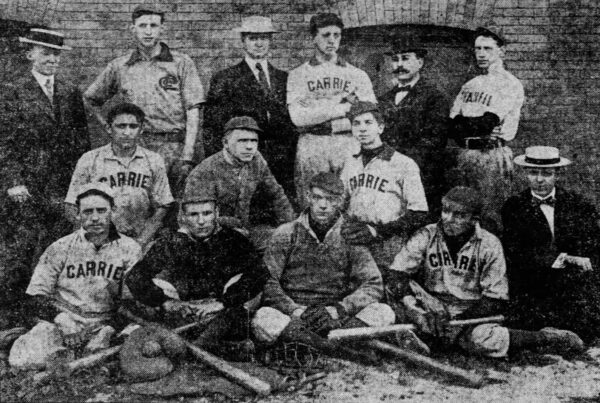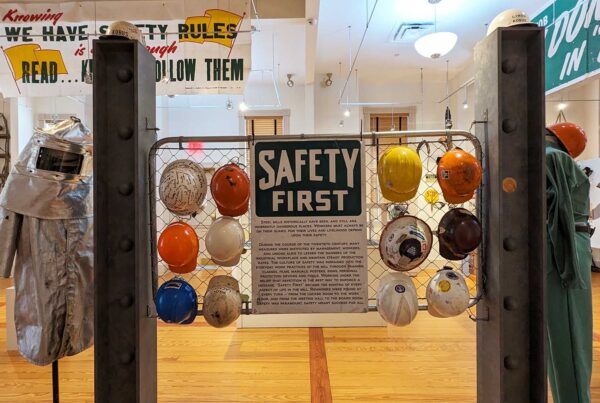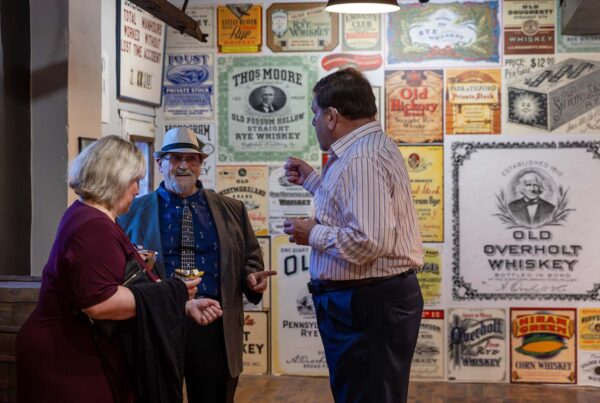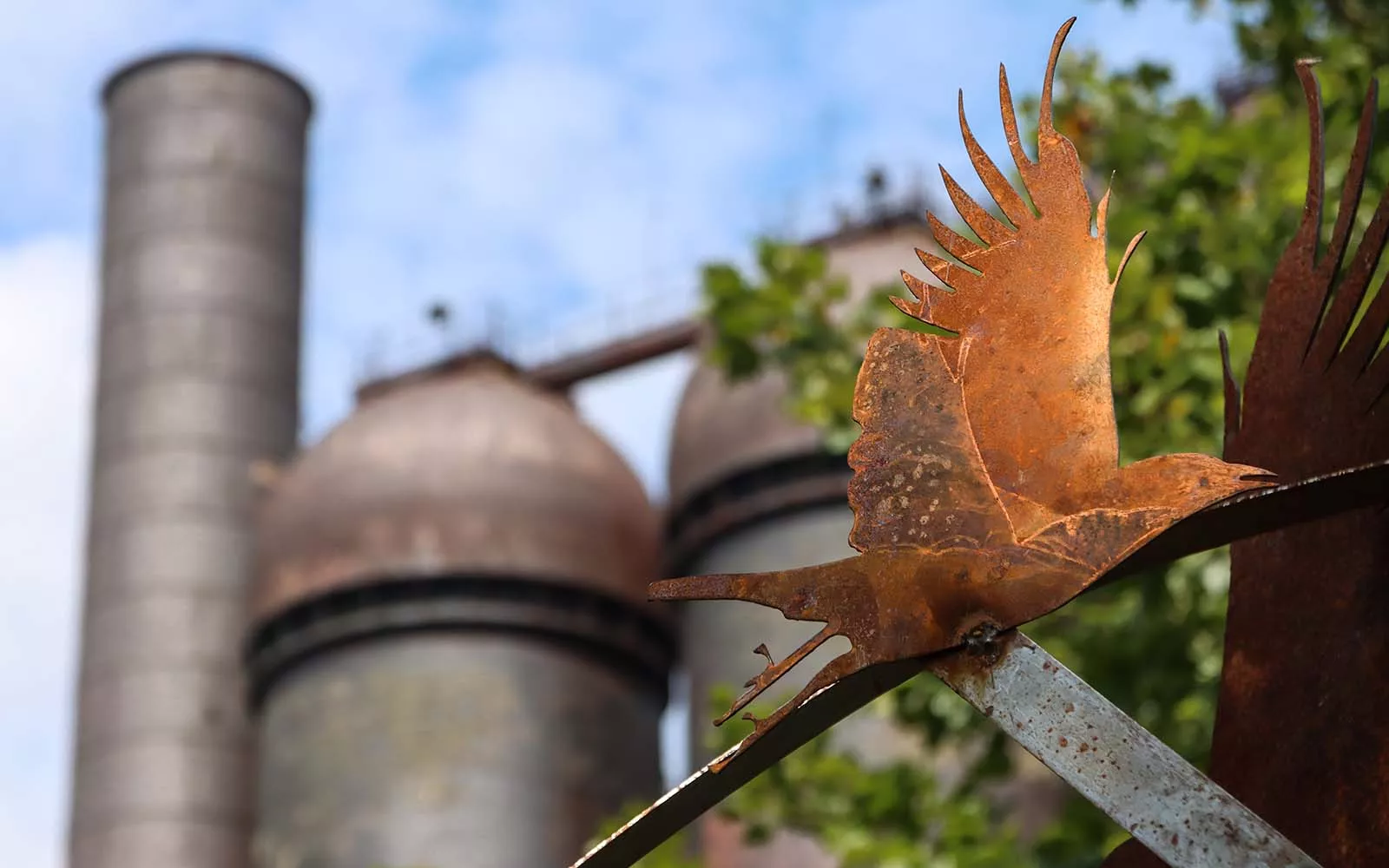
By Carly V. McCoy, Director of Communications | Image: Detail of Jan Loney’s Flight in front of the stoves and stack for the Carrie Blast Furnaces Number 6 & 7.
 Alloy Pittsburgh
Alloy Pittsburgh
When Alloy Pittsburgh returned to the Carrie Blast Furnaces late last month, it offered six fresh perspectives of this National Historic Landmark, informed by the legacy of the site and the communities surrounding it.
Unique to this year’s process, Alloy Pittsburgh artists went beyond their residency experience at the Carrie Blast Furnaces themselves—they were to be embedded in neighboring communities. Each artist was partnered with a community-based organization adjacent to the Furnaces. This informed their work, pulling not just the history of the site, but also taking inspiration from the generations of people living today whose communities are now deindustrialized.
Previously, we highlighted three of these artists as they were out and about during their residencies. Now that the show is up, we wanted to take a minute to reflect on the process and final products of the three remaining artists—Jan Loney, Sandy Kessler Kaminski, and Darnell Chambers.
Take a look at the photo essay below to learn more. If you’d like a chance to see their works for yourself, we welcome you to join Rivers of Steel for a happy hour artist-led tour on September 23 or sign up for a guided tour of the exhibition on a Friday, Saturday, or Sunday before the show closes on September 26.
Jan Loney—Flight
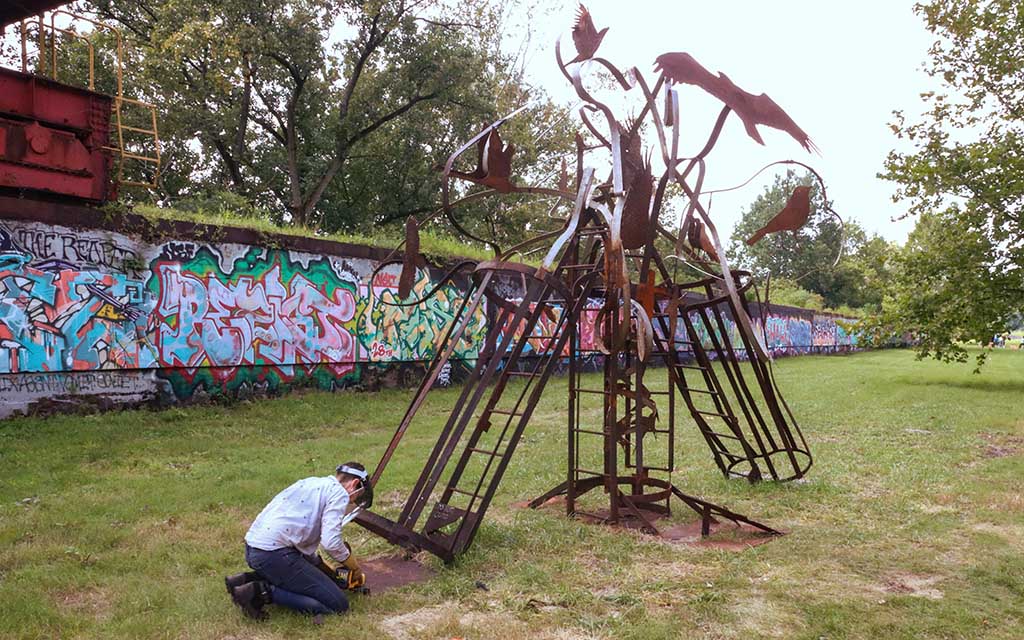
Jan Loney adds a few final touches to her work “Flight.”
Jan Loney is unique among this year’s cohort of Alloy artists. Instead of being embedded with a neighboring community organization, Rivers of Steel was her host organization, and the Carrie Blast Furnaces National Historic Landmark was her residency site.
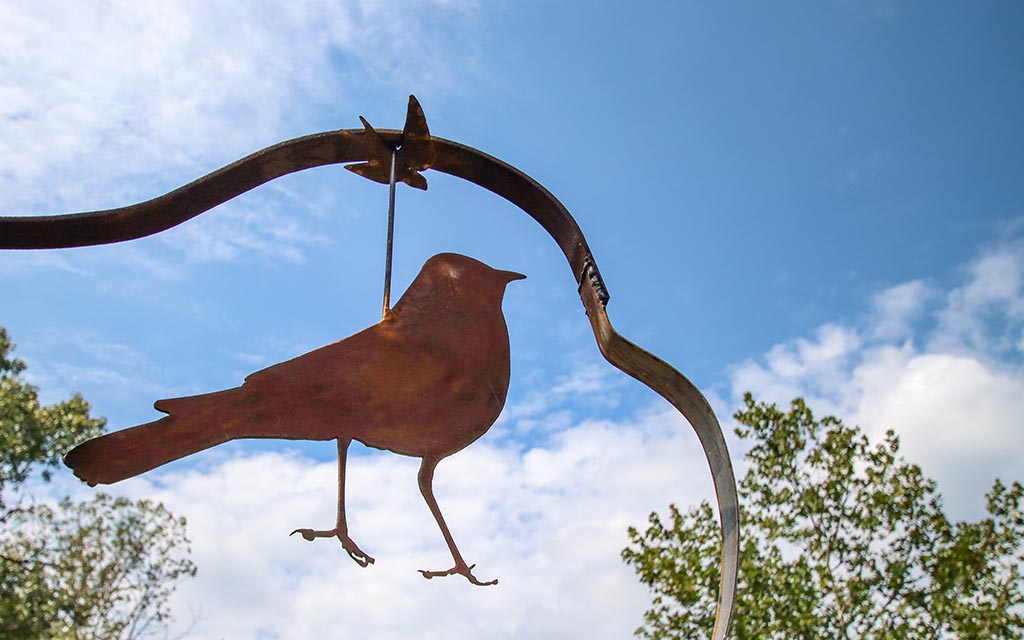
Detail of Jan Loney’s “Flight.”
Jan is keenly aware of songbirds, the avian companions who visit her daily and those encountered throughout her journey in life. During her residency at the Carrie Blast Furnaces, she relished a variety of perspectives onsite, from the ground and river level, to high atop the furnace. In a mill that was once inhospitable to nearly all wildlife, birds now inhabit the dizzying heights where most humans can only dream of reaching.
For Jan, these birds represent so many people; countless people from many places and moments in her life. Like any flock, they migrate together and apart.
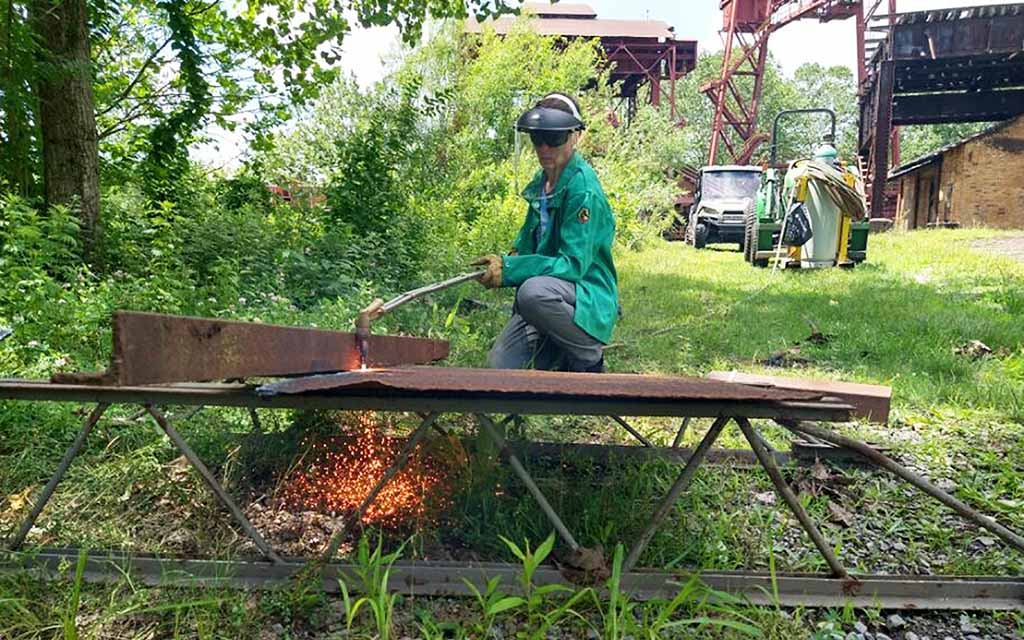
Jan Loney sourcing her materials.
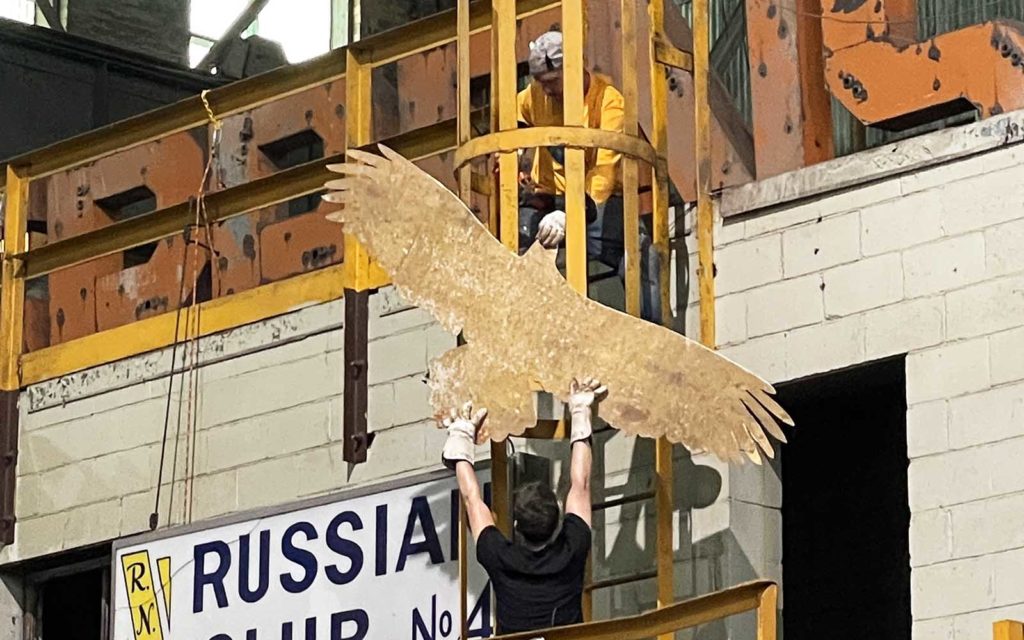
Jan Loney’s brass bird is affixed to a support structure.
In this installation, she created birds from recycled materials gathered onsite to represent the many people who have migrated in and out of her life, as well as those workers who once animated the Carrie Blast Furnaces, immigrating to and from this region over the centuries.
Sandy Kessler Kaminski—Legacy
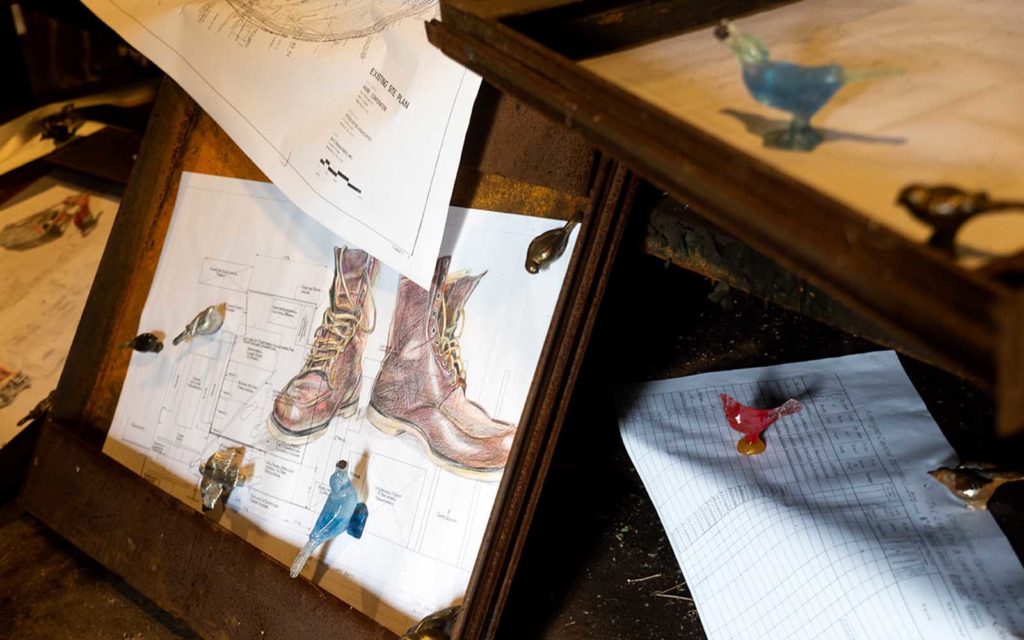
Details of “Legacy” by Sandy Kessler Kaminski.
Sandy Kessler Kaminski’s work is influenced by society, culture, and the environment. Legacy is a temporary installation located on the grounds of Carrie Blast Furnaces National Historic Landmark.
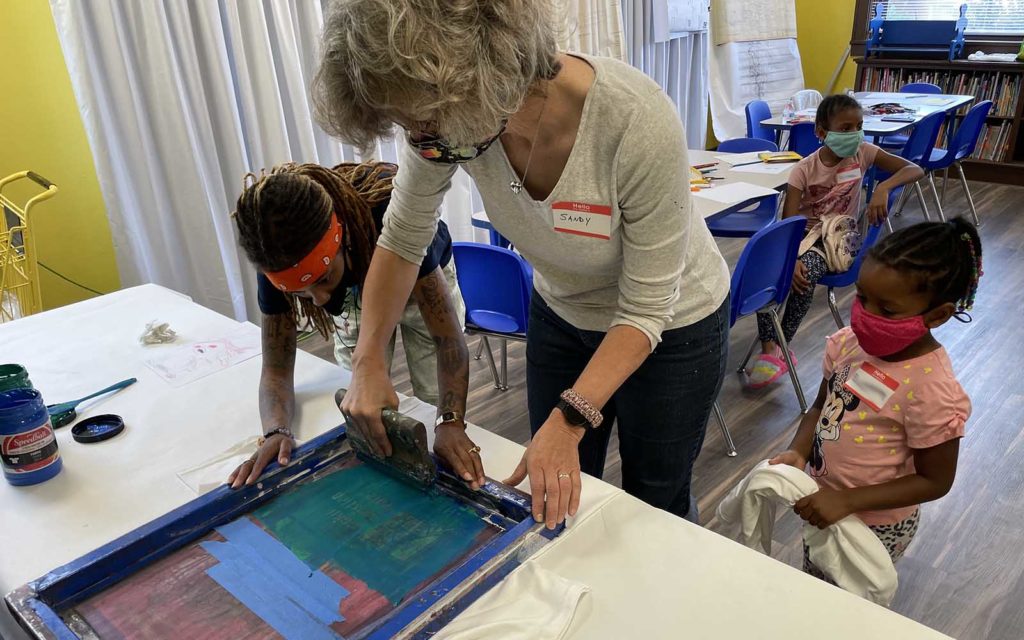
Sandy works on her installation with help from the youth at the Rankin Christian Center.
In this work, she reinterprets engineering drawings created by the steel industry detailing the river system and the Carrie Furnaces ironworks and machinery, along with architectural drawings of the Rankin Christian Center. The enhanced drawings are held in place over the course of a month using native songbird paperweights.
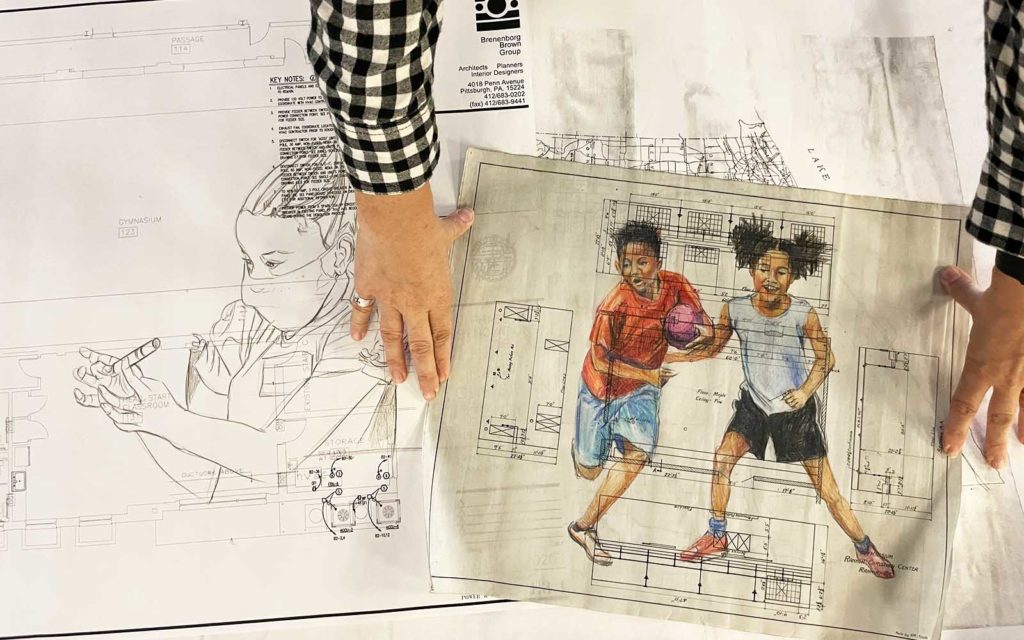
Details of “Legacy” in progress.
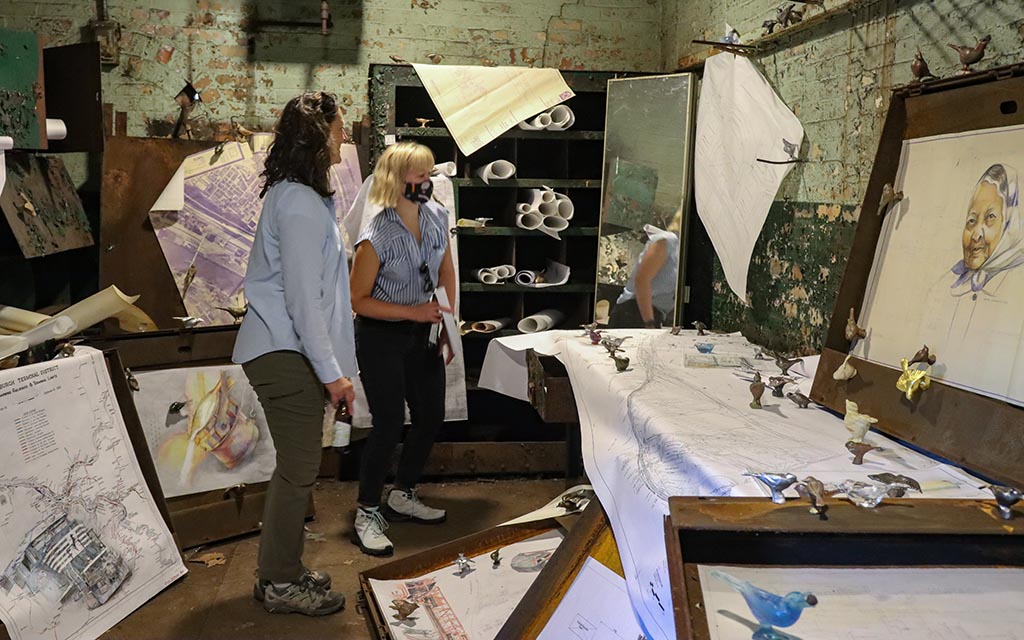
Exhibition-goers examine the “Legacy” by Sandy Kessler Kaminski.
The iron, aluminum, bronze, copper, limestone, glass, and wood used to form the birds represent the various industries found in Pittsburgh. A gilded bird represents the faith of communities central to each neighborhood. As the birds age during the month-long exhibition, she hopes the resulting patina will stain the paper as an allegory to how industry continues to mark the landscape of Western Pennsylvania and the people of Rankin.
Darnell Chambers—Strikebreakers
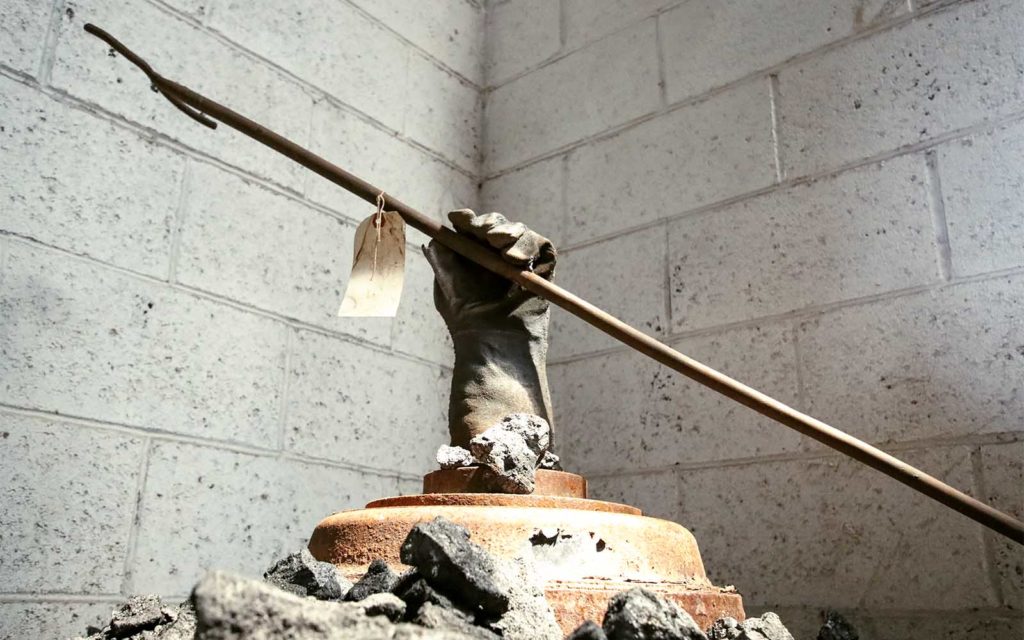
One of Darnell’s cast iron gloves with a tool from Rivers of Steel’s archives.
Darnell Chambers’ work is deeply inspired by world history and his personal experiences growing up poor in America as a man of color. For Alloy Pittsburgh, he created six iron-cast gloves accompanied by five paintings representing the African American workforce employed at the Carrie Blast Furnaces—workers that held 84 percent of the most difficult and dangerous jobs onsite. Paintings included in the installation depict various players from the Homestead Grays, a negro league baseball team that grew out of the legendary U.S. Steel Homestead Steel Works.
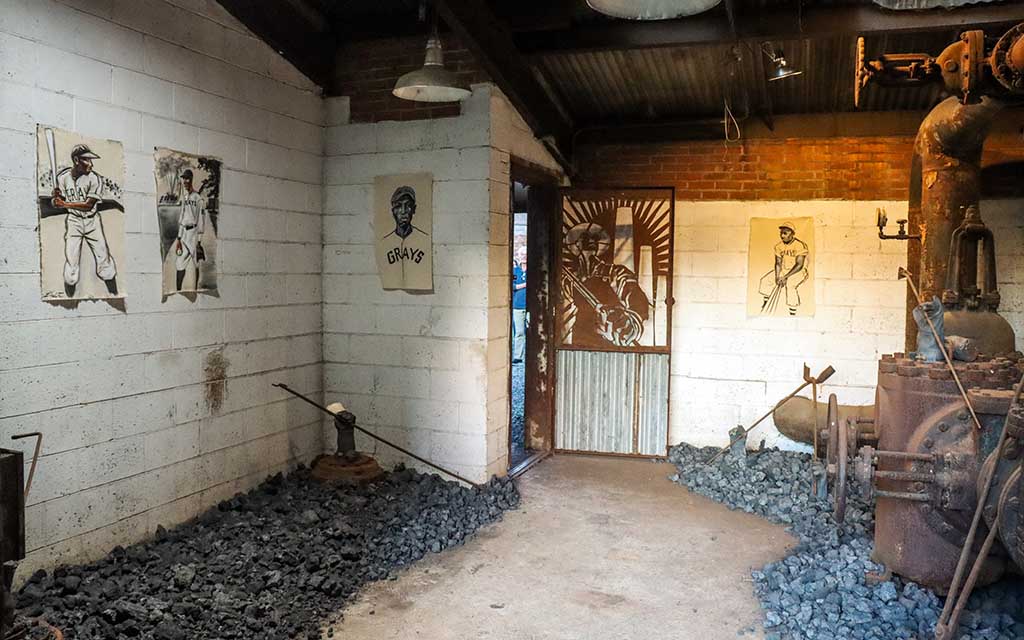
A view of “Strikebreakers”
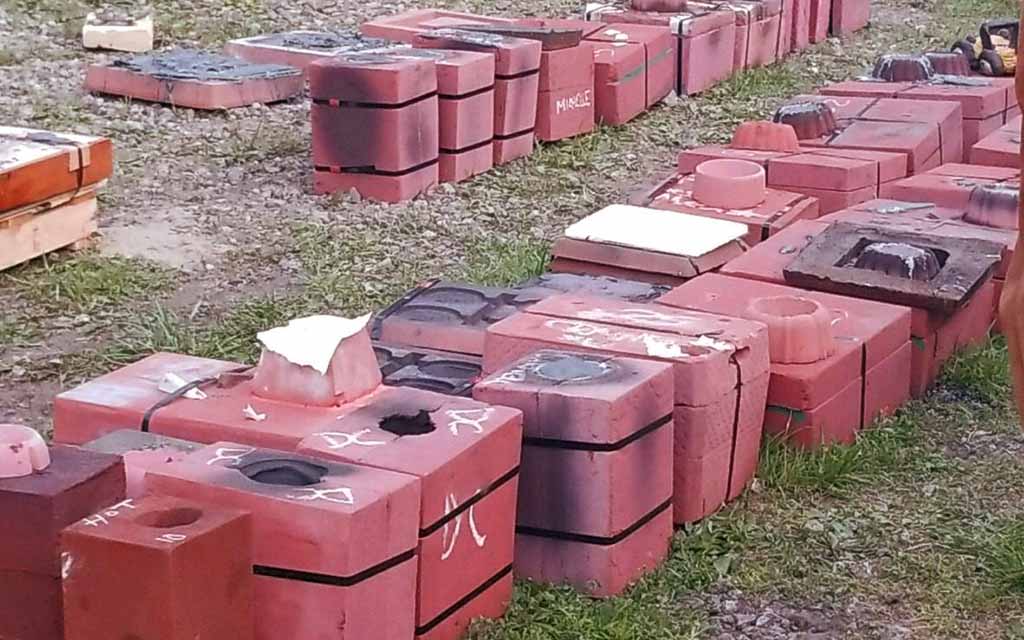
The molds with the cast iron gloves inside.
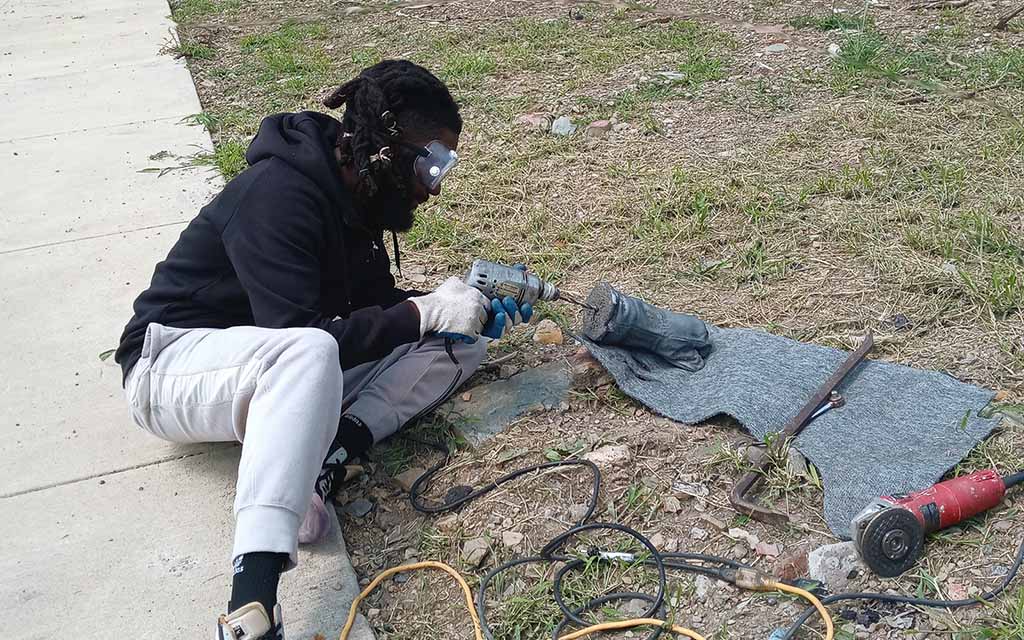
Darnell working on the gloves.
He molded the hands into positions that these workers might have held while using a variety of tools. Alongside these cast pieces are actual tools from the 137-year-old furnace site. The artwork intends to reveal the skin tone of the workers beneath the gloves. Rusted and dark, the layer underneath the gloves represents people of color, with the intention of the hints of rips and tears in the gloves to help showcase the importance of black strength, courage, and resilience.
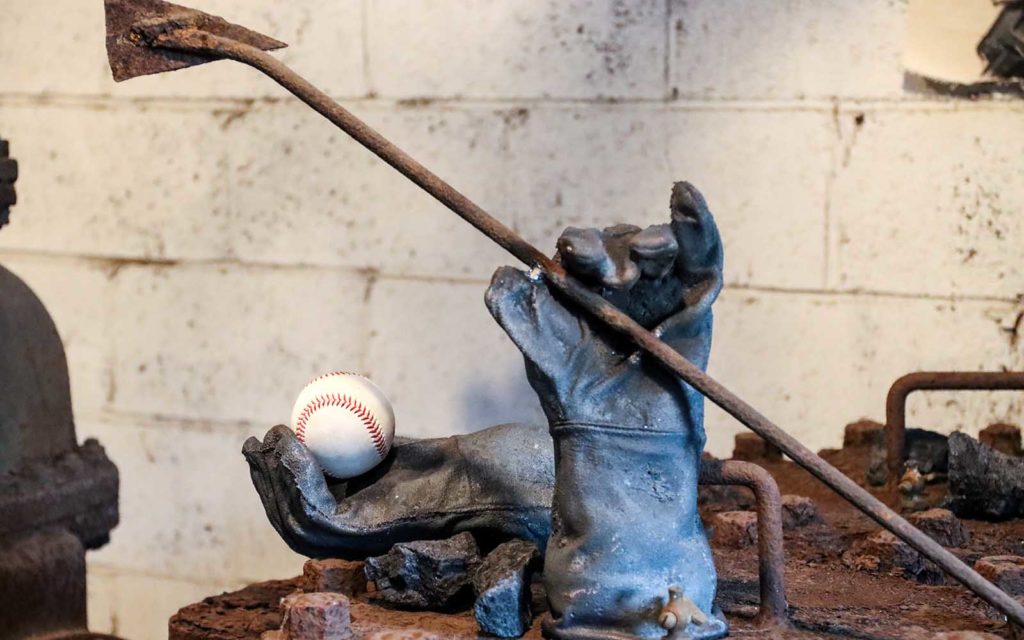
Another detail of Darnell Chamer’s “Strikebreakers”
For more information about Alloy Pittsburgh, visit the Exhibitions page or check out our recent Instagram posts.
Alloy Pittsburgh 2021 is supported in part by the National Endowment for the Arts. To find out more about how National Endowment for the Arts grants impact individuals and communities, visit www.arts.gov.
Additional support has been provided by the Fine Foundation and the Claude Worthington Benedum Foundation.

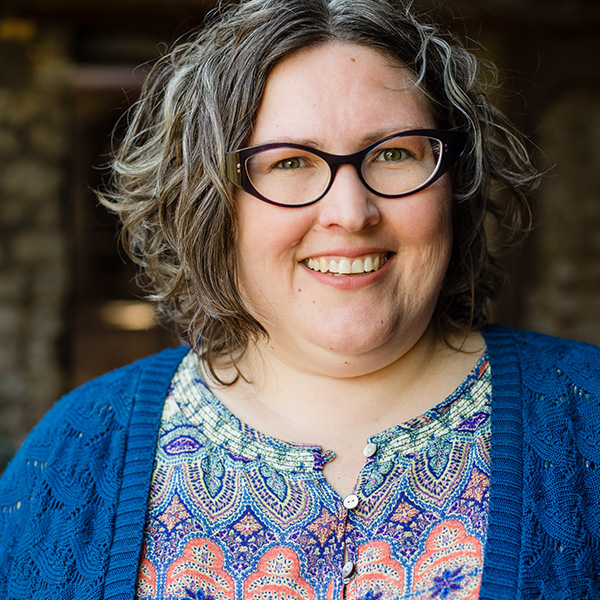 Alloy Pittsburgh
Alloy Pittsburgh